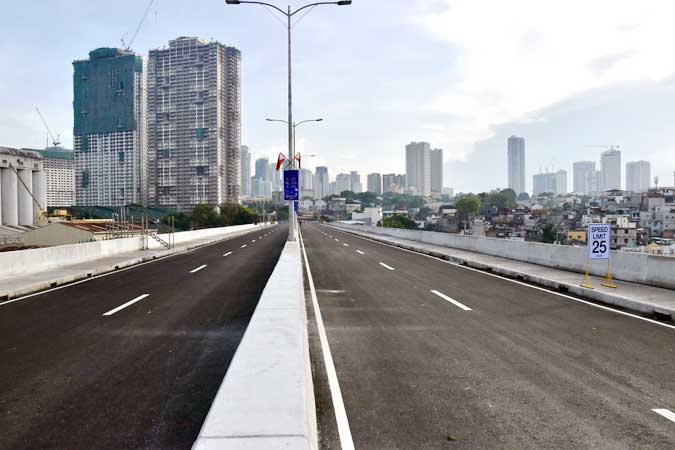May budget deficit narrows to P200B

Beatrice M. Laforga, Reporter
THE NATIONAL Government’s budget deficit narrowed in May as the double-digit surge in revenues outpaced spending on base effects, the Bureau of the Treasury (BTr) reported.
Preliminary data from the BTr showed the fiscal gap fell by 1% to P200.3 billion in May from P202.1 billion a year ago. However, this was nearly five times larger than the P44-billion deficit in April.
Government revenues jumped 69.3% year on year to P256.4 billion in May, mainly due to a 61% rise in tax collections to P183.7 billion.
The Bureau of Internal Revenue (BIR) and Bureau of Customs (BoC) both recorded double-digit annual growth in collections. The BIR’s tax haul rose by 60.5% to P183.7 billion, while the BoC’s collection of duties and taxes went up by 58.05% to P48.6 billion.
Other state offices saw a 505% surge in tax collections to P1.9 billion in May from P300 million a year ago. Other revenues also increased by 270.5% year on year to P22.2 billion.
This was after BTr’s income grew by fivefold to P12.4 billion on higher dividends from its Bond Sinking Fund investment, while other offices collecting nontax revenues also saw their income more than double to P9.7 billion due to low base effect.
Overall spending also rose but at a slower pace of 29.2% to P456.7 billion in May, from P353.6 billion the year before.
“The sizeable increase is attributed mainly to the: disbursements for the capital outlay projects of the Public Works department, banner programs of the Education and Health departments, and releases to the Philippine Health Insurance Corp. (PhilHealth) for the health insurance premiums of senior citizens, and to local government units for the Barangay Development Program,” the BTr said.
Primary spending — which is total expenditures less interest payments — grew by 28% year on year to P427.8 billion, while interest payments climbed by 58% to P28.9 billion.
The government runs on a budget deficit as it spends more than the revenues it generates to boost growth. It borrows from local and foreign lenders to plug this fiscal gap that started to widen since last year after the pandemic-induced recession pulled down tax collections and bloated spending.
FIVE-MONTH PERFORMANCE
Year to date, the budget deficit edged up by 0.7% to P566.2 billion in the five months to May.
Total state revenues increased by 12.9% to P1.245 trillion from January to May, buoyed by the 27% jump in tax collections to P1.132 trillion.
For the five-month period, the BIR increased its tax take by 29% to P872 billion while Customs saw its revenues grow by 19% to P250 billion.
The total was partially offset by lower nontax income of other government offices, which fell by 46.8% to P112.4 billion from P211.2 billion.
BTr’s income plunged by 65% to P60.8 billion because of the high base last year when state-run firms frontloaded their dividend remittances to boost the government’s pandemic response. Nontax revenues by other offices grew by 32% to P51.6 billion.
Meanwhile, overall state spending only grew by 8.8% to P1.811 trillion in the January to May period.
Primary spending jumped 8.5% year on year to P1.632 trillion while interest payments increased by 11.6% to P178.6 billion.
The share of interest payments to overall expenditures went up to 9.86% from 9.62% last year. As a percentage of revenues, this fell to 14.35% from 14.52% a year ago.
ING Bank N.V. Manila Senior Economist Nicholas Antonio T. Mapa said the big jump in revenues last month was buoyed by base effects, as the strict lockdown a year ago brought nearly all economic activity to a standstill.
“We can expect the Philippines to continue to post budget shortfalls for the balance of the year as revenues fall short due to lackadaisical economic activity and the fallout from CREATE (Corporate Recovery and Tax Incentives for Enterprises Act), with the government curtailing spending likely to limit the hit on the overall debt-to-GDP (gross domestic product) ratio,” Mr. Mapa said in a note on Tuesday.
While the Philippines is on track to stay within its deficit limit, he said balancing the budget from here on will be more “complicated” as the government seeks to keep fiscal metrics intact while supporting economic recovery.
Economic managers capped this year’s budget deficit at P1.856 trillion or equivalent to 9.3% of GDP, and stood firm on their policy to observe fiscal prudence amid calls for bigger stimulus package to fast-track the recovery.
“The strategy to hold off on spending has worked to limit the deficit and debt but it also almost ensures that the injured economy stays in sick bay for a little longer. Meanwhile, hopes that previously passed stimulus packages would deliver some form of impetus continues to linger, despite the latter’s inability to deliver only a modest boost to the economy despite all its hype,” Mr. Mapa said.
Meanwhile, Rizal Commercial Banking Corp. Chief Economist Michael L. Ricafort cautioned that the widening budget deficit in the recent months, as the state aims to hike spending, could force the government to borrow more and increase its outstanding debt.
“For the coming months, increased government spending on various government projects and infrastructure projects around the country could continue especially up to shortly before the May 2022 elections,” Mr. Ricafort said.
A faster recovery backed by sustained vaccination program and further reopening of the economy could help narrow the budget deficit and keep the country’s debt stock in check, he said.
The National Government’s outstanding debt reached P10.991 trillion at the end of April, up 2% from P10.77 trillion as of end-March. Year on year, the debt pile jumped 28% from P8.6 trillion.

